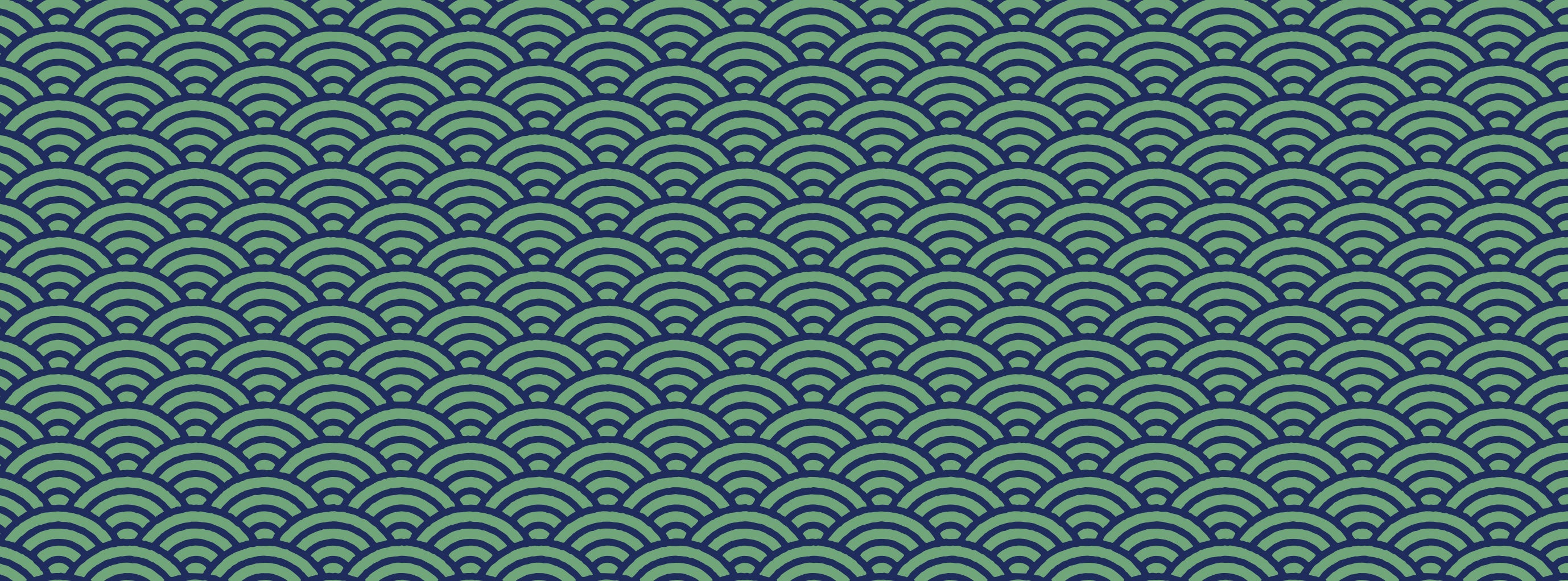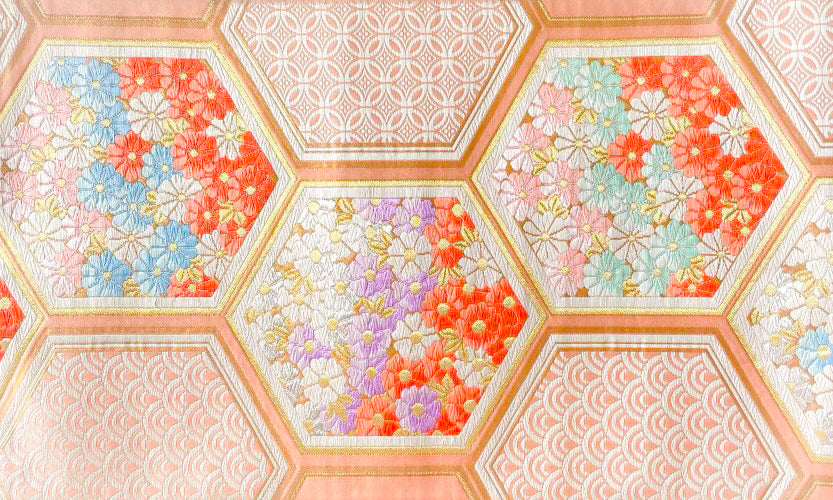青海波 -Eternal waves-
水面に見える波頭を幾何学的な表現に落とし込んだ古くからある文様で、雅楽『青海波』の装束に用いられたことから、この名が付いたといわれています。青海勘七という江戸時代中期の塗師が特殊な刷毛で巧みに描いたことがきっかけとなり、広く知られるようになりました。
The pattern, known as "Seigaiha" or "Blue Sea Waves," is an ancient design that geometrically represents the rippling crests seen on the water's surface. Its name is derived from its usage in the ceremonial attire for the Gagaku performance titled "Seigaiha." The design gained popularity during the Edo period, particularly through the skilled work of a lacquer artisan named Aomi KanShichi. Using a unique brush, he adeptly depicted the pattern, leading to its widespread recognition.
この文様・和柄が用いられている帯地
Obi fabrics with this Japanese pattern from the obico selection


